-
 Bitcoin
Bitcoin $118200
0.49% -
 Ethereum
Ethereum $3580
0.33% -
 XRP
XRP $3.429
-0.49% -
 Tether USDt
Tether USDt $1.000
-0.05% -
 BNB
BNB $734.1
0.18% -
 Solana
Solana $177.7
0.26% -
 USDC
USDC $0.9999
-0.01% -
 Dogecoin
Dogecoin $0.2434
4.12% -
 TRON
TRON $0.3203
-1.58% -
 Cardano
Cardano $0.8334
1.59% -
 Hyperliquid
Hyperliquid $44.70
2.39% -
 Stellar
Stellar $0.4636
-1.10% -
 Sui
Sui $3.789
-0.43% -
 Chainlink
Chainlink $18.49
4.03% -
 Hedera
Hedera $0.2674
-0.08% -
 Avalanche
Avalanche $25.08
6.37% -
 Bitcoin Cash
Bitcoin Cash $520.4
1.12% -
 Shiba Inu
Shiba Inu $0.00001495
1.88% -
 Litecoin
Litecoin $112.5
9.34% -
 UNUS SED LEO
UNUS SED LEO $8.994
0.24% -
 Toncoin
Toncoin $3.209
-0.74% -
 Polkadot
Polkadot $4.393
2.95% -
 Uniswap
Uniswap $10.16
-0.07% -
 Monero
Monero $325.2
1.09% -
 Ethena USDe
Ethena USDe $1.001
0.00% -
 Bitget Token
Bitget Token $4.898
-1.03% -
 Pepe
Pepe $0.00001326
0.54% -
 Dai
Dai $1.000
0.02% -
 Aave
Aave $317.2
-0.43% -
 Cronos
Cronos $0.1214
0.07%
Will an ETH ETF include staking rewards?
An ETH ETF may include staking rewards depending on its structure, custody solutions, and regulatory compliance, offering investors potential yield-like returns.
Jul 09, 2025 at 08:29 pm
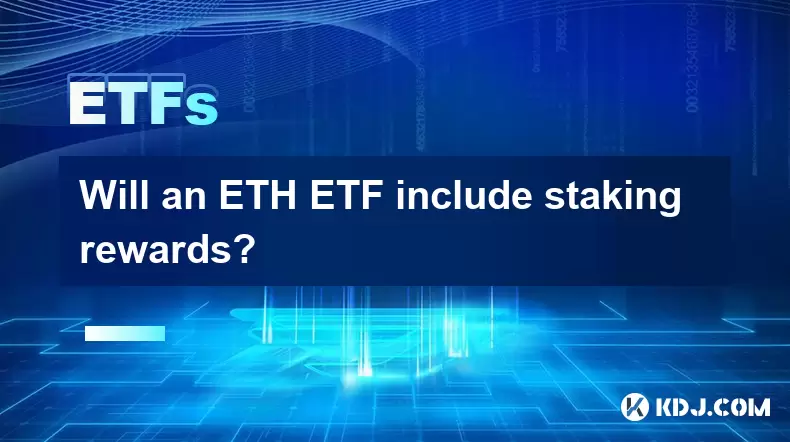
Understanding the Concept of an ETH ETF
An ETH ETF (Ethereum Exchange-Traded Fund) is a financial product that allows investors to gain exposure to Ethereum without directly owning the cryptocurrency. It operates similarly to traditional ETFs, where shares are traded on stock exchanges and represent ownership in the underlying asset—in this case, Ethereum (ETH). The primary goal of an ETH ETF is to mirror the price movement of ETH, making it accessible to institutional and retail investors who prefer regulated investment vehicles.
One critical aspect that potential investors often inquire about is whether such an ETF would include staking rewards. Staking involves locking up ETH to support the network's operations and earn rewards in return. Since Ethereum transitioned to a proof-of-stake consensus mechanism with The Merge, staking has become a core component of its ecosystem.
How Staking Works in the Ethereum Network
After The Merge, Ethereum moved from a proof-of-work (PoW) model to a proof-of-stake (PoS) system. This means that instead of miners validating transactions using computational power, validators are chosen based on the amount of ETH they are willing to stake as collateral. Validators earn block rewards and transaction fees for proposing and attesting to new blocks.
To participate in staking, users must deposit at least 32 ETH into the official Ethereum deposit contract. However, many smaller investors use staking pools or services provided by platforms like Lido Finance or Coinbase. These platforms allow users to stake any amount of ETH and receive liquid staking derivatives like stETH, which represents their staked ETH plus accrued rewards.
Operational Structure of ETH ETFs
An ETH ETF typically holds physical ETH in cold storage or custodial accounts. The fund issuer manages the custody and security of the assets while issuing shares that track the net asset value (NAV) of the underlying ETH holdings. Some ETF providers may also offer synthetic exposure through futures contracts or swaps, but the focus here is on physically-backed ETFs.
If an ETH ETF intends to capture staking rewards, it must actively participate in the Ethereum network’s validation process. This requires setting up validator nodes or delegating to third-party staking services. The logistical complexity increases because ETF issuers must comply with regulatory frameworks, custody standards, and investor reporting requirements.
Potential Inclusion of Staking Rewards in ETH ETFs
Whether an ETH ETF includes staking rewards depends on several factors:
- Regulatory Classification: If the ETF is classified as a passive tracker without active participation in blockchain governance or validation, it may not engage in staking.
- Custody Solutions: Custodians must support staking functionality. Not all institutional custodians currently offer this service.
- Fee Structures: Staking rewards might be used to offset management fees or passed directly to shareholders.
- Issuer Strategy: Some ETF providers may choose to exclude staking to reduce operational risk and complexity.
For example, BlackRock’s Ethereum ETF proposal mentions holding ETH and tracking its price performance but does not explicitly state how staking rewards will be handled. Other proposals may differ depending on jurisdiction and strategy.
Technical Steps Involved in Integrating Staking Rewards into an ETF
Integrating staking rewards into an ETH ETF involves multiple technical and procedural steps:
- Validator Node Setup: The ETF issuer or its custodian must operate or partner with entities running Ethereum validator nodes.
- Deposit Process: ETH held by the fund must be deposited into the Ethereum staking contract or delegated to a staking pool.
- Reward Tracking: Accrued rewards must be accurately tracked and reflected in the ETF’s NAV.
- Distribution Mechanism: Decisions must be made on whether to reinvest rewards or distribute them to shareholders periodically.
- Compliance Reporting: All staking-related activities must align with regulatory disclosures and audit trails.
Each step introduces additional layers of complexity, particularly around custody, transparency, and tax treatment of staking income.
Comparison with Bitcoin ETFs
Bitcoin (BTC), being a proof-of-work blockchain, does not have a native staking mechanism. Therefore, BTC ETFs do not deal with staking rewards. This makes the structure of BTC ETFs simpler compared to potential ETH ETFs, especially when considering whether to incorporate staking.
However, some BTC mining companies issue equity products that provide exposure to mining rewards. These are different from ETFs and involve company-level risks unrelated to the price of BTC itself.
In contrast, Ethereum’s PoS model opens the door for ETH ETFs to potentially offer yield-like returns via staking, enhancing the investment appeal for income-focused investors.
Frequently Asked Questions
Q: Can individual investors still stake ETH if they invest through an ETH ETF?
A: Typically, investors in an ETH ETF do not have direct control over the underlying ETH, so they cannot personally stake it. Any staking would be managed by the ETF issuer or custodian.
Q: Will staking rewards be taxable if included in an ETF?
A: Tax treatment varies by jurisdiction. In many cases, staking rewards may be considered taxable income when received, even if reinvested or retained within the ETF structure.
Q: Are there any existing ETH ETFs that include staking rewards?
A: As of now, most proposed ETH ETFs in the U.S. have not finalized their structures regarding staking. Some offshore or non-U.S. listed products may offer staking-linked returns, but they are not widely available or regulated.
Q: How can I verify if an ETH ETF includes staking rewards?
A: Investors should review the ETF’s prospectus, offering documents, and shareholder reports. These materials disclose how the fund manages the underlying assets and whether staking is part of its operations.
Disclaimer:info@kdj.com
The information provided is not trading advice. kdj.com does not assume any responsibility for any investments made based on the information provided in this article. Cryptocurrencies are highly volatile and it is highly recommended that you invest with caution after thorough research!
If you believe that the content used on this website infringes your copyright, please contact us immediately (info@kdj.com) and we will delete it promptly.
- Meme Coins Mania: Presales and Charts Spiking in 2025
- 2025-07-20 02:30:11
- Rick Harrison, the Titanic Coin, and a Deal That Sank
- 2025-07-20 02:30:11
- American Eagle Palladium Coin Set for September 4 Release: What to Expect
- 2025-07-20 00:35:12
- FloppyPepe: Could This Meme Coin Be Your Ticket to Crypto Millionaire Status with a 15,800% ROI?
- 2025-07-20 00:50:12
- Ethereum's 2025 ATH: Could These 20x Tokens Be Your Golden Ticket?
- 2025-07-20 00:35:12
- Solana, Altcoin Bets, and the Next Big Thing: What's the Play?
- 2025-07-20 01:15:12
Related knowledge
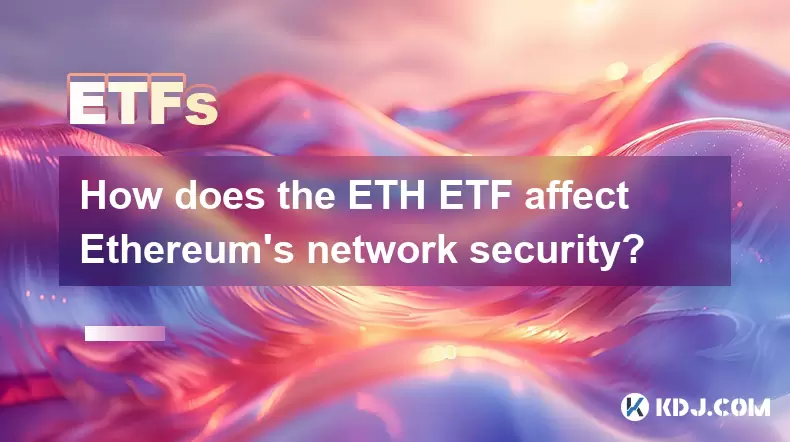
How does the ETH ETF affect Ethereum's network security?
Jul 17,2025 at 01:29pm
Understanding the ETH ETF ConceptAn Ethereum Exchange-Traded Fund (ETH ETF) is a financial product that allows investors to gain exposure to Ethereum ...
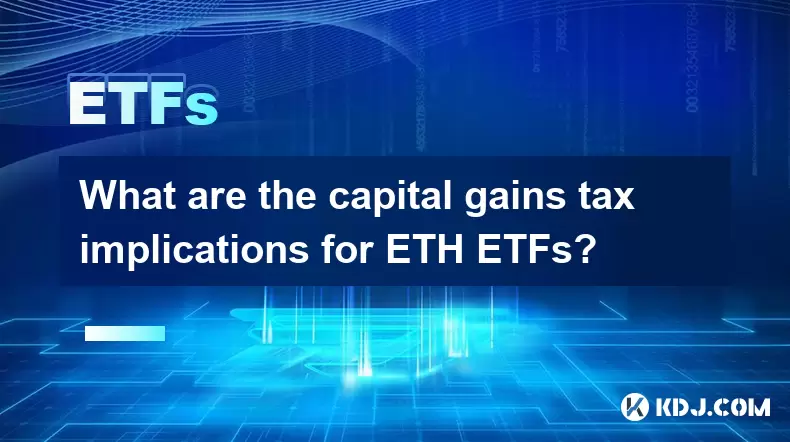
What are the capital gains tax implications for ETH ETFs?
Jul 18,2025 at 08:00am
Understanding Capital Gains Tax in Cryptocurrency InvestmentsCapital gains tax is a tax imposed on the profit realized from the sale of an asset that ...
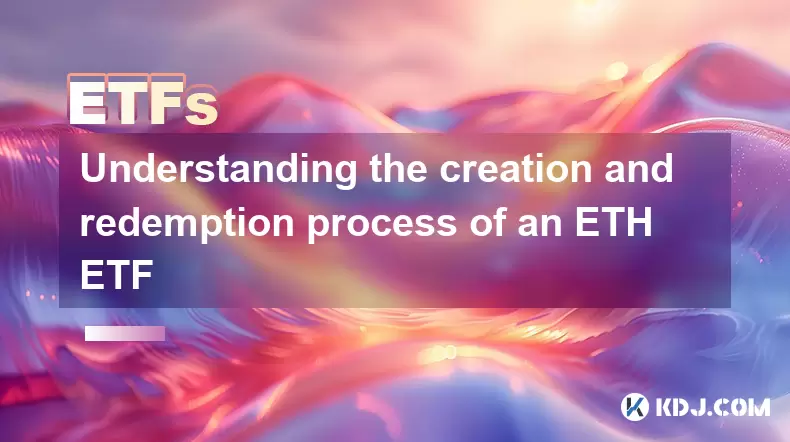
Understanding the creation and redemption process of an ETH ETF
Jul 19,2025 at 07:36am
What is an ETH ETF?An ETH ETF (Ethereum Exchange-Traded Fund) is a financial product designed to track the price of Ethereum without requiring investo...

How to analyze which ETH ETF is the best choice
Jul 19,2025 at 05:01pm
Understanding ETH ETFs and Their RelevanceEthereum Exchange-Traded Funds (ETFs) have emerged as a popular investment vehicle for those seeking exposur...
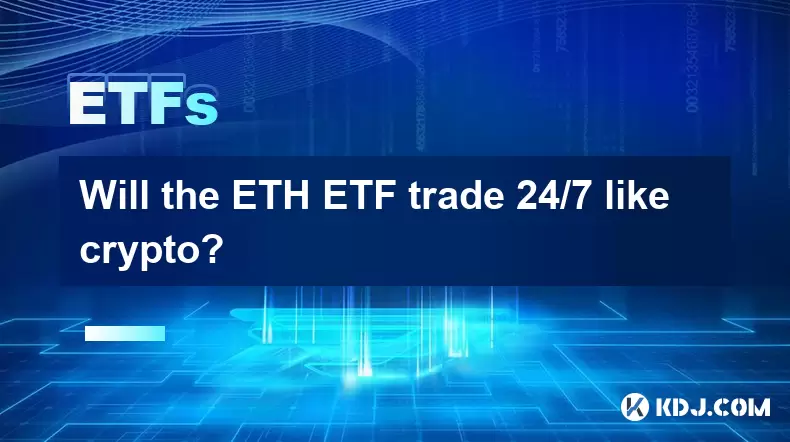
Will the ETH ETF trade 24/7 like crypto?
Jul 18,2025 at 10:00am
Understanding the ETH ETF and Its Trading HoursThe Ethereum Exchange-Traded Fund (ETH ETF) is a financial product that allows investors to gain exposu...
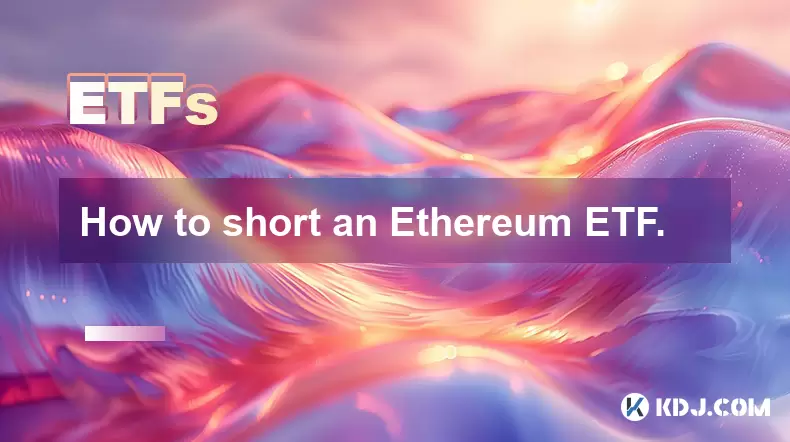
How to short an Ethereum ETF.
Jul 17,2025 at 05:43pm
Understanding the Concept of Shorting an Ethereum ETFShorting an Ethereum ETF involves betting against the price of Ethereum through a specific exchan...

How does the ETH ETF affect Ethereum's network security?
Jul 17,2025 at 01:29pm
Understanding the ETH ETF ConceptAn Ethereum Exchange-Traded Fund (ETH ETF) is a financial product that allows investors to gain exposure to Ethereum ...

What are the capital gains tax implications for ETH ETFs?
Jul 18,2025 at 08:00am
Understanding Capital Gains Tax in Cryptocurrency InvestmentsCapital gains tax is a tax imposed on the profit realized from the sale of an asset that ...

Understanding the creation and redemption process of an ETH ETF
Jul 19,2025 at 07:36am
What is an ETH ETF?An ETH ETF (Ethereum Exchange-Traded Fund) is a financial product designed to track the price of Ethereum without requiring investo...

How to analyze which ETH ETF is the best choice
Jul 19,2025 at 05:01pm
Understanding ETH ETFs and Their RelevanceEthereum Exchange-Traded Funds (ETFs) have emerged as a popular investment vehicle for those seeking exposur...

Will the ETH ETF trade 24/7 like crypto?
Jul 18,2025 at 10:00am
Understanding the ETH ETF and Its Trading HoursThe Ethereum Exchange-Traded Fund (ETH ETF) is a financial product that allows investors to gain exposu...

How to short an Ethereum ETF.
Jul 17,2025 at 05:43pm
Understanding the Concept of Shorting an Ethereum ETFShorting an Ethereum ETF involves betting against the price of Ethereum through a specific exchan...
See all articles

























































































